10 Japanese Azalea Gardens In and Around Tokyo 2024
A Different Spring Flower-Viewing
With cherry blossoms fading, why not enjoy a different flower-viewing? Don’t miss the bright colors of azaleas in Tokyo to usher in late spring!
In April and May, tsutsuji (Japanese azalea) burst into bloom across gardens in Tokyo in their many bright colors. From roadsides to private gardens, these bushes, which are native to Japan, light up the spring scenery just as the cherry blossoms disappear into the wind.
First gaining widespread popularity in Edo, now known as Tokyo, during the Genroku Age (1688-1704), azaleas then spread across Japan. Eventually, Japanese azalea cultivars, such as the hon-kirishima and yae-kirishima, even became known overseas as representative Japanese flowers.
Below, we rounded up some of the very best Japanese azalea gardens in and around Tokyo to get to know these bold and beautiful flowers. From shrine tsutsuji festivals to centuries-old bushes read on for the loveliest places to enjoy azaleas in easy reach of the capital!
Nezu Shrine
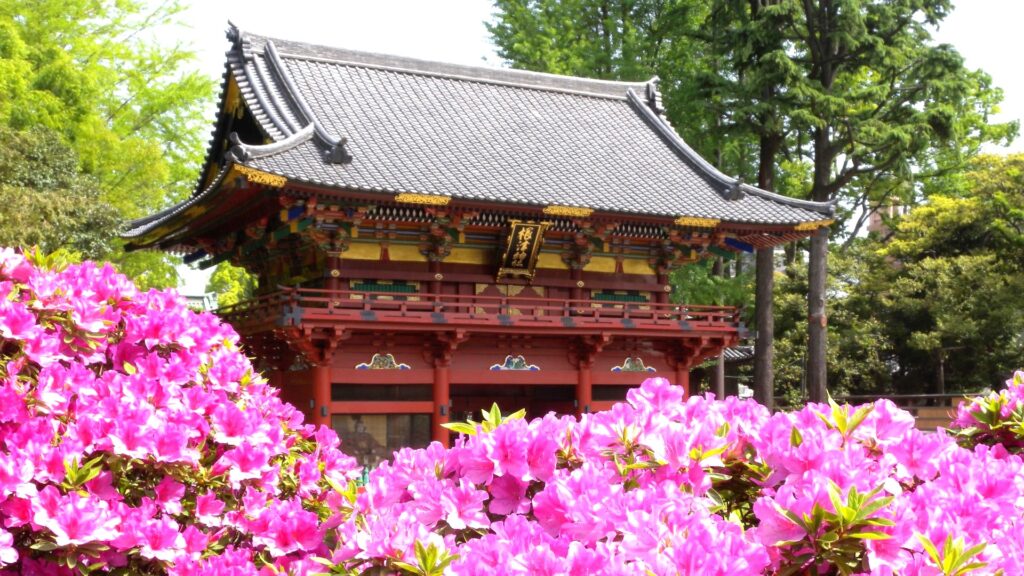 © Photo by Nezu Shrine
© Photo by Nezu ShrineUntil April 30th, 2024, Nezu Shrine will hold its Bunkyo Tsutsuji Matsuri (Bunkyo Azalea Festival), known as one of the most beautiful displays of this spring flower in central Tokyo. This shrine’s azalea garden comes alive in April with as many as 3,000 azalea plants bursting into bloom throughout the month. There are also about 100 different varieties of azaleas on display, including some rare cultivars that are unique to this garden. The festival can get quite lively during the blooming period, so it’s best to visit early in the morning.
- Address: 1-28-9 Nezu, Bunkyo-ku, Tokyo
- Admission: ¥500 (to enter the hillside garden during the Azalea Festival)
- Access: Nezu Station (Chiyoda Line)
Rikugien
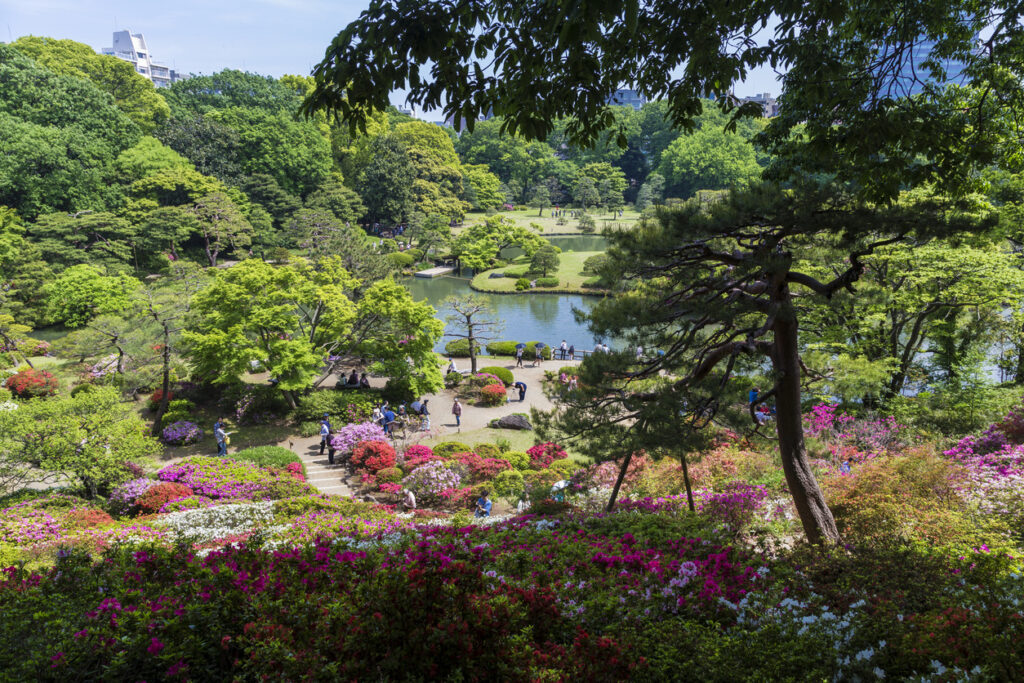 © Photo by iStock: hungdh
© Photo by iStock: hungdhThe famous Rikugien garden’s azaleas bloom between mid-April and early May. Originally a daimyo (feudal lord) garden, Rikugien is thought to have been built in the late 1600s or early 1700s. As such, the impressive azalea bushes you can see today were mostly planted in the Edo period, with some being sought out for their rarity. The azaleas in Rikugien are known for their colorful flowers, which bloom orange-pink, bright red, fuschia and light purple. The view from the park’s highest spot, the Fujishirotoge Viewpoint, is especially beautiful.
- Address: 6-16-3 Hon-komagome, Bunkyo-ku, Tokyo
- Admission: ¥300
- Access: Komagome Station (JR Yamanote Line)
Imperial Palace East Garden
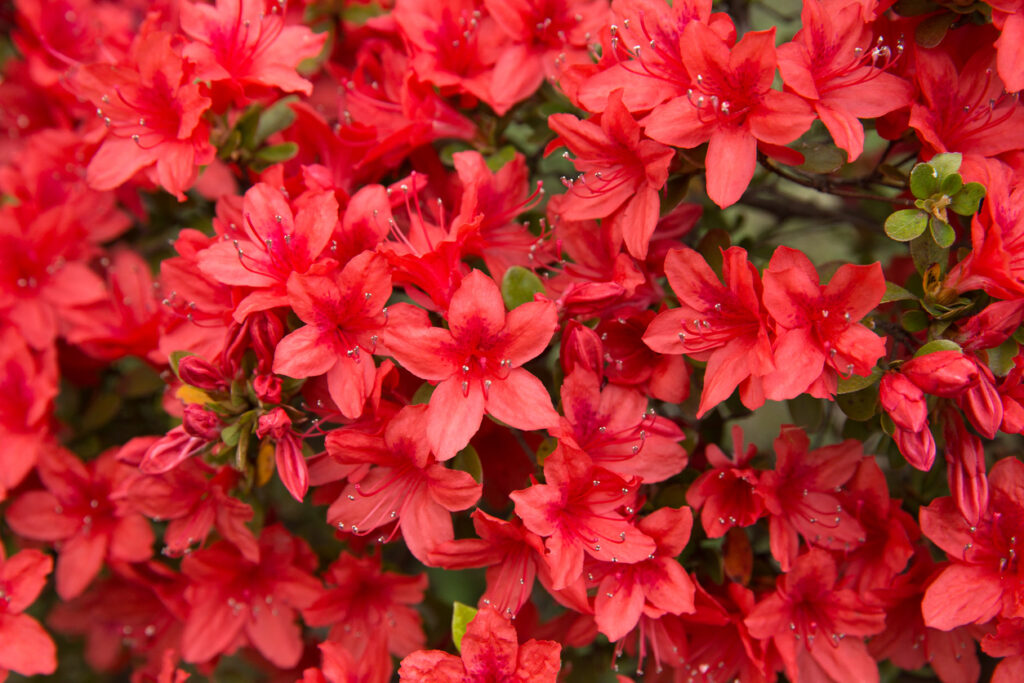 © Photo by iStock: paprikaworks
© Photo by iStock: paprikaworksThe Imperial Palace’s East Garden is a green respite only a short distance from central Tokyo and Otemachi Stations. Known for the few remnants of the old Edo Castle, this garden also has lovely seasonal flowers and is often free of the usual Tokyo crowds. In the Ninomaru Garden, throughout April, you can find bushes of breathtaking azaleas in whites, pinks, purples and reds. Alongside the azaleas, you can view the Japanese strolling garden and forested area which belies the cityscape surrounding it.
- Address: 1-1 Chiyoda, Chiyoda-ku, Tokyo
- Admission: Free!
- Access: Otemachi Station (Chiyoda, Tozai, Marunouchi, Hanzomon and Mita Lines)
Meiji Jingu Shrine
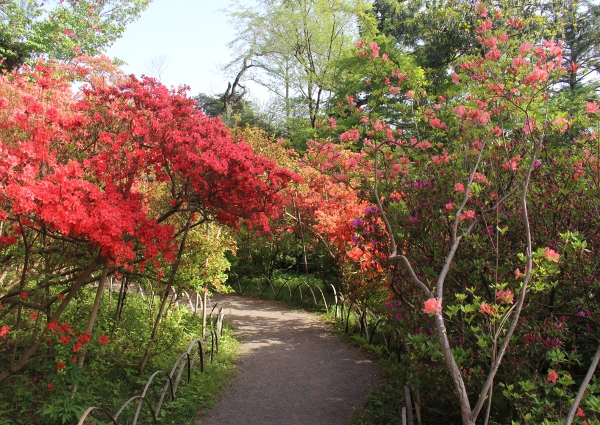 © Photo by Meiji Jingu Shrine
© Photo by Meiji Jingu ShrineOne of the most popular shrines in Tokyo, Meiji Jingu Shrine, is also home to a gorgeous inner garden that features different flowers throughout the year, such as azaleas, irises and water lilies. The red-colored azaleas, located in the tsutsuji-yama part of the garden, largely bloom in April, but other varieties will bloom in May if you miss the first round of them. You can also visit Empress Shoken’s Tea House and the garden’s “power spot,” Kiyomasa’s Well, where you can place your hand into its cool water for a little revitalization.
- Address: 1-1 Yoyogikamizonocho, Shibuya City, Tokyo
- Admission: ¥500 (Meiji Jingu Shrine is free to visit, but the inner garden requires a fee)
- Access: Harajuku Station (JR Yamanote) or Meiji-jingumae Station (Chiyoda Line)
Heisei Tsutsuji Park
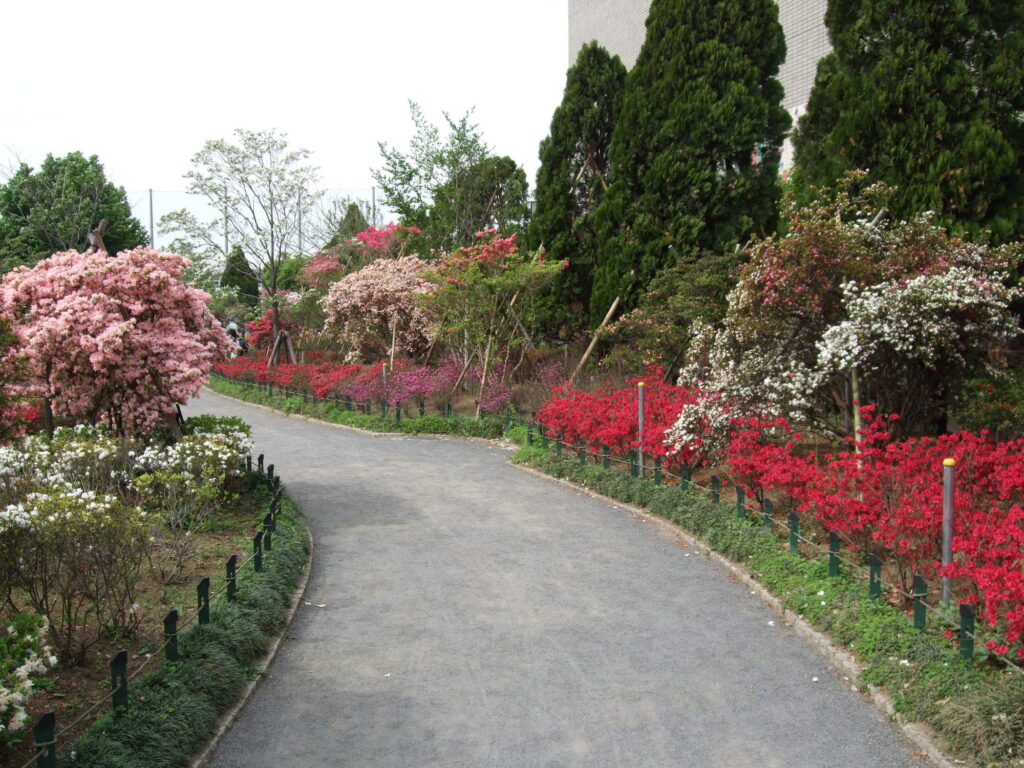 © Photo by Pixta: a_text
© Photo by Pixta: a_textLocated in Nerima Ward is an azalea paradise known as Heisei Tsutsuji Park. The park is home to approximately 10,000 azalea plants, including 600 varieties, which largely flower from late April through May. The most notable cultivars in the park are the early April blooming Sakura Genka Azalea and the Kurume Azalea which comes into full bloom in late April. The Kurume Azalea is particularly lovely with its light reddish-pink blooms. The park is also an ideal spot for a picnic.
- Address: 1-17-6 Nerima, Nerima-ku, Tokyo
- Admission: Free!
- Access: Nerima Station (Seibu Line)
Karasuyama Tsutsuji Ryokuchi Park
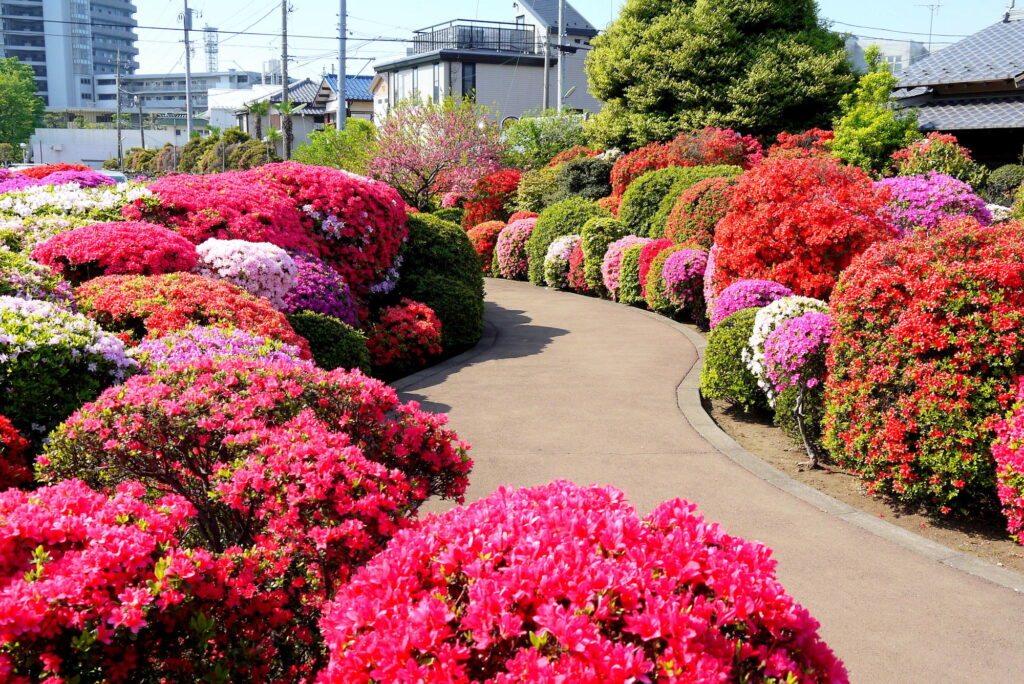 © Photo by Pixta: hirorin
© Photo by Pixta: hirorinIf you happen to live or are visiting Setagaya Ward in the spring, why not visit Karasuyama Tsutsuji Ryokuchi Park for some azalea-viewing? From mid-April to early May, 32 varieties of azaleas and satsuki (a type of azalea native to Japan) bloom in this garden. The small azalea garden is easily walkable at 1,000 square meters but is brimming with colorful blooms during the spring season. You can visit this park along with the adjacent Nishizawa Azalea Garden for a picturesque stroll.
- Address: 6-16-8, Kitakarasuyama, Setagaya-ku, Tokyo
- Admission: Free!
- Access: Chitose-Karasuyama Station (Keio Line)
Jindai Botanical Gardens
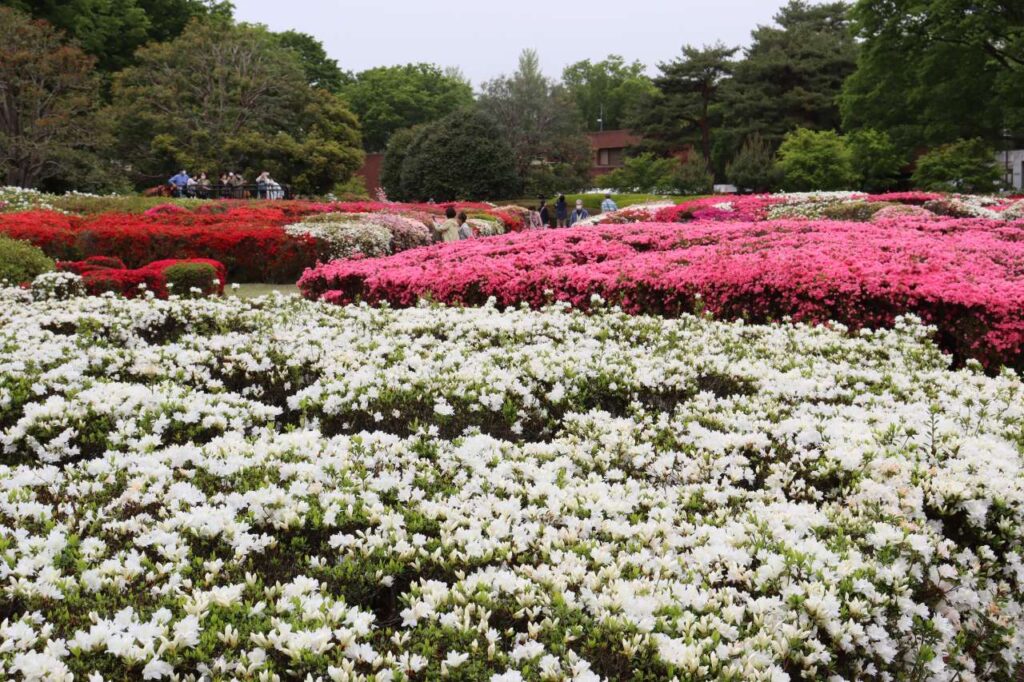 © Photo by Jindai Botanical Gardens
© Photo by Jindai Botanical GardensOpened to the public in 1961 and remaining Tokyo’s only botanical garden, the Jindai Botanical Garden is renowned for its extensive plant diversity. The garden’s large 7,800 square meter azalea garden is home to around 12,000 plants and 270 varieties. The azaleas, particularly the Kurume and Lovely cultivars, reach peak blooming between mid-April to mid-May blanketing the garden in pink, white and purple flowers. There is also a pond next to the azaleas from which you can view the flowers’ reflections which makes for some scenic photographs.
- Address: 5-31-10 Jindaiji Motomachi, Chofu City, Tokyo
- Admission: ¥500
- Access: Mitaka Station or Kichijoji Station (Chuo Main Line)
Koishikawa Botanical Garden
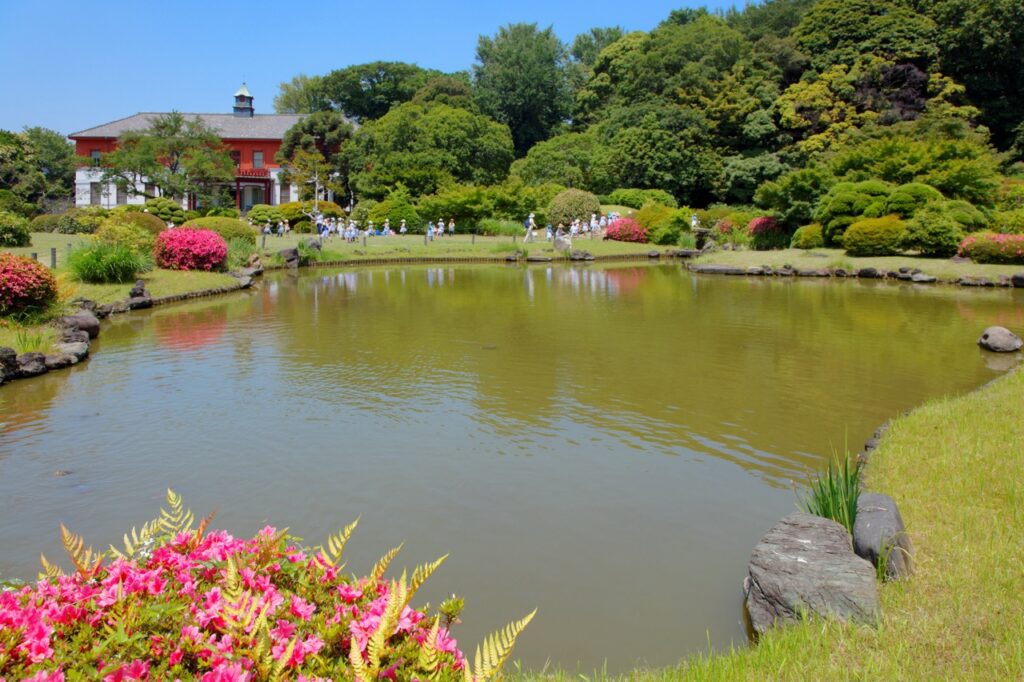 © Photo by Pixta: ジャバ
© Photo by Pixta: ジャバLocated on the grounds of the prestigious Tokyo University, the garden, popularly known as the Koishikawa Botanical Garden, is considered to be the birthplace of botany in Japan. To this day, it continues to be a world center for botanical research. Not only is the garden home to nearly 1.9 million plant varieties but it is also designated as a national historic site and a place of scenic beauty. The azalea portion of the garden contains upwards of 100 species, some of which have been cultivated since ancient times in Japan.
- Address: 3-7-1 Hakusan, Bunkyo-ku, Tokyo
- Admission: ¥500
- Access: Myogadani Station (Marunouchi Line) or Hakusan Station (Mita Line)
Shiofune Kannon Temple
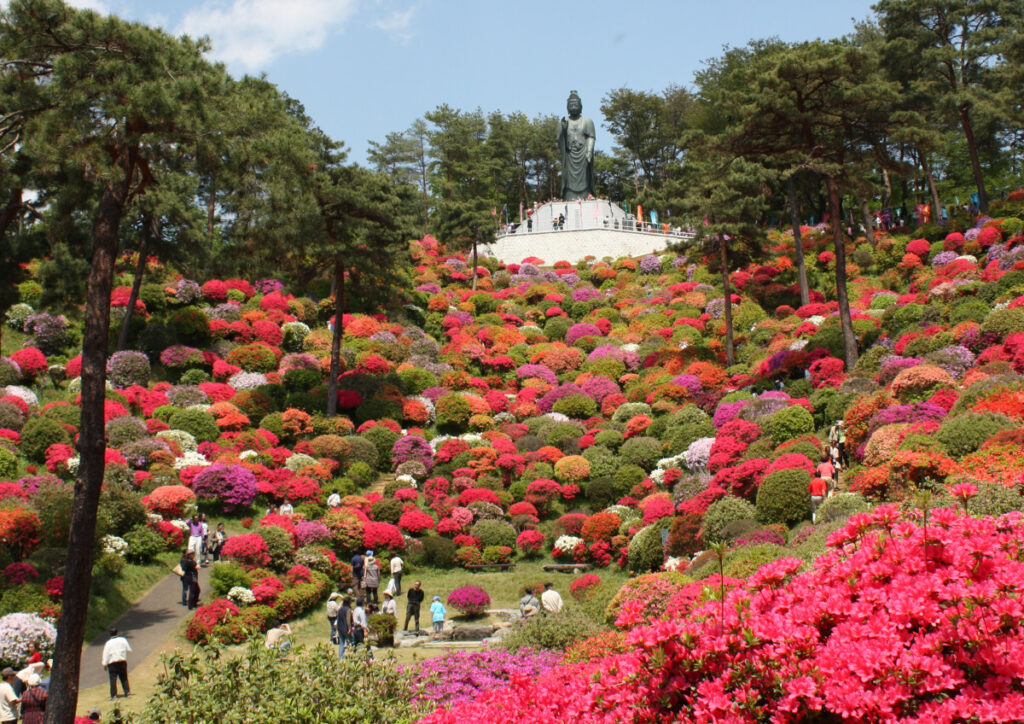 © Photo by Shiofune Kannon Temple
© Photo by Shiofune Kannon TempleShiofune Kannon is a 1300-year-old Shingon-sect Buddhist temple complex that is well-known for its wide array of azalea shrubs that bloom from mid-April through mid-May. The temple sits within a small valley where 17,000 brightly colored azalea bushes surround an impressive statue of Kannon, the Goddess of Mercy. The temple holds an annual Azalea Festival, which features food stalls selling ice cream and yakisoba, and various events. Why not try firewalking, an event held on May 3, where adventurous visitors can try walking on hot coals?
- Address: 194 Shiobune, Ome-shi, Tokyo
- Admission: ¥300
- Access: Kabe Station (Ome Line)
Yahata Azalea Fields (Tochigi)
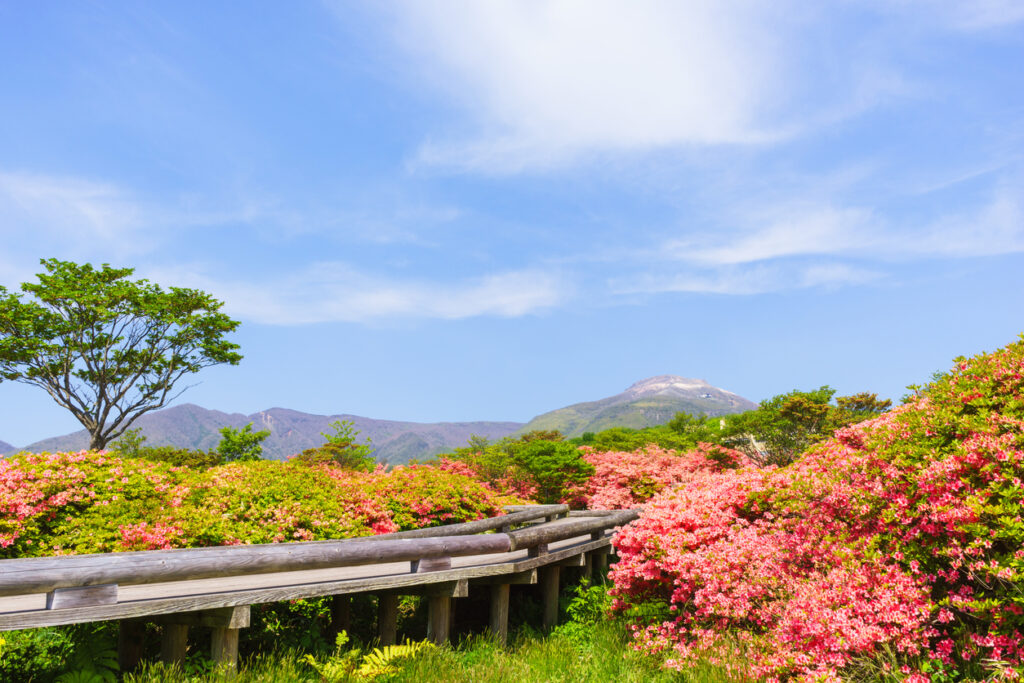 © Photo by iStock: T-Tadanobu
© Photo by iStock: T-TadanobuYahata Azalea Fields cover about 23 hectares and are home to over 200,000 azaleas. Between mid-May and mid-June, the fields come alive with pinkish-red blooms with some bushes even standing head-high. Enjoy a walk through the fields getting face-to-face with the many azaleas. Or, from a higher vantage point, head up to the Tsutsuji Suspension Bridge. From here, you’ll see a panoramic view of the azaleas set against the surrounding nature. Be sure to take a deep breath while you are in the field. This azalea park has also been designated as one of Japan’s 100 most fragrant sites!
- Address: Yumoto, Nasumachi, Nasugun, Tochigi
- Admission: Free!
- Access: JR Nasushiobara Station
Other Flower Gardens in Tokyo
- 6 Wisteria Gardens In and Around Tokyo
- 5 Sunflower Gardens In and Around Tokyo
- 5 Cosmos Gardens In and Around Tokyo
- 5 Hydrangea Gardens In Tokyo
- 5 Rose Gardens In and Around Tokyo
What are your favorite Japanese azalea gardens in or near Tokyo? Let us know if we missed any in the comments below!












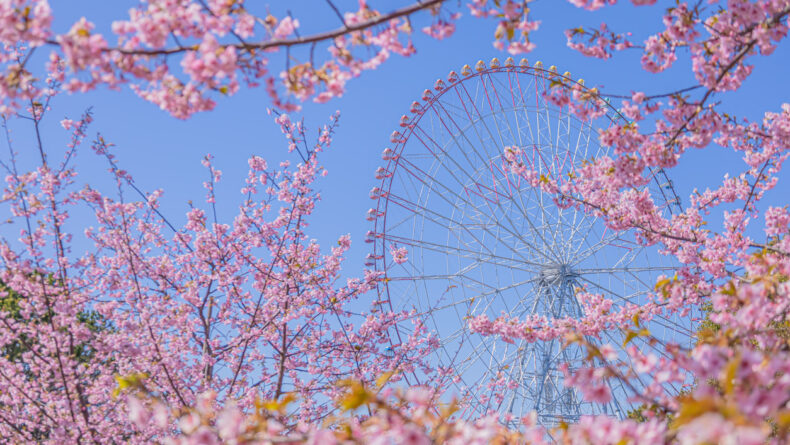
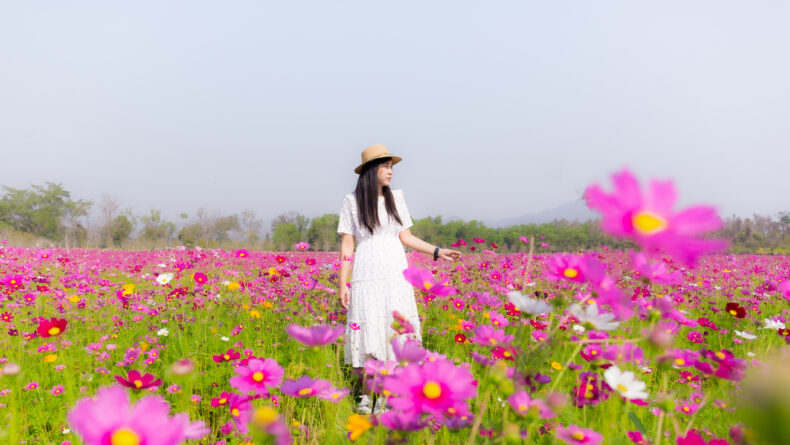
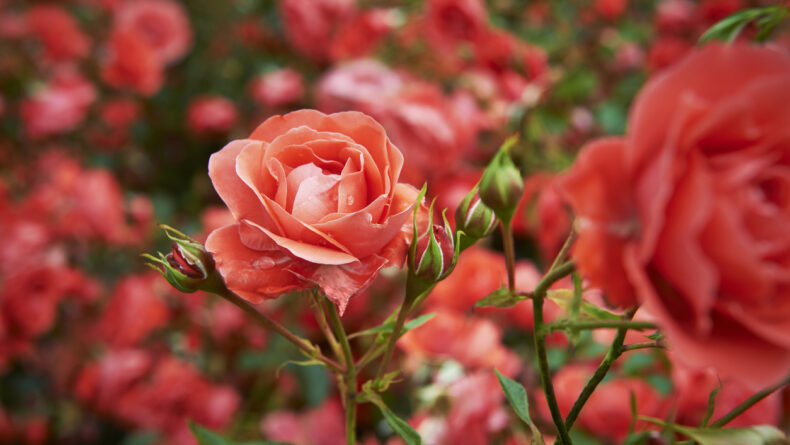
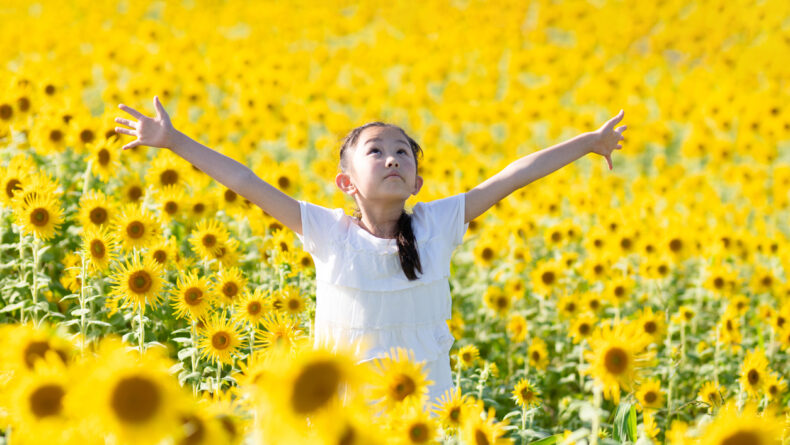
Leave a Reply